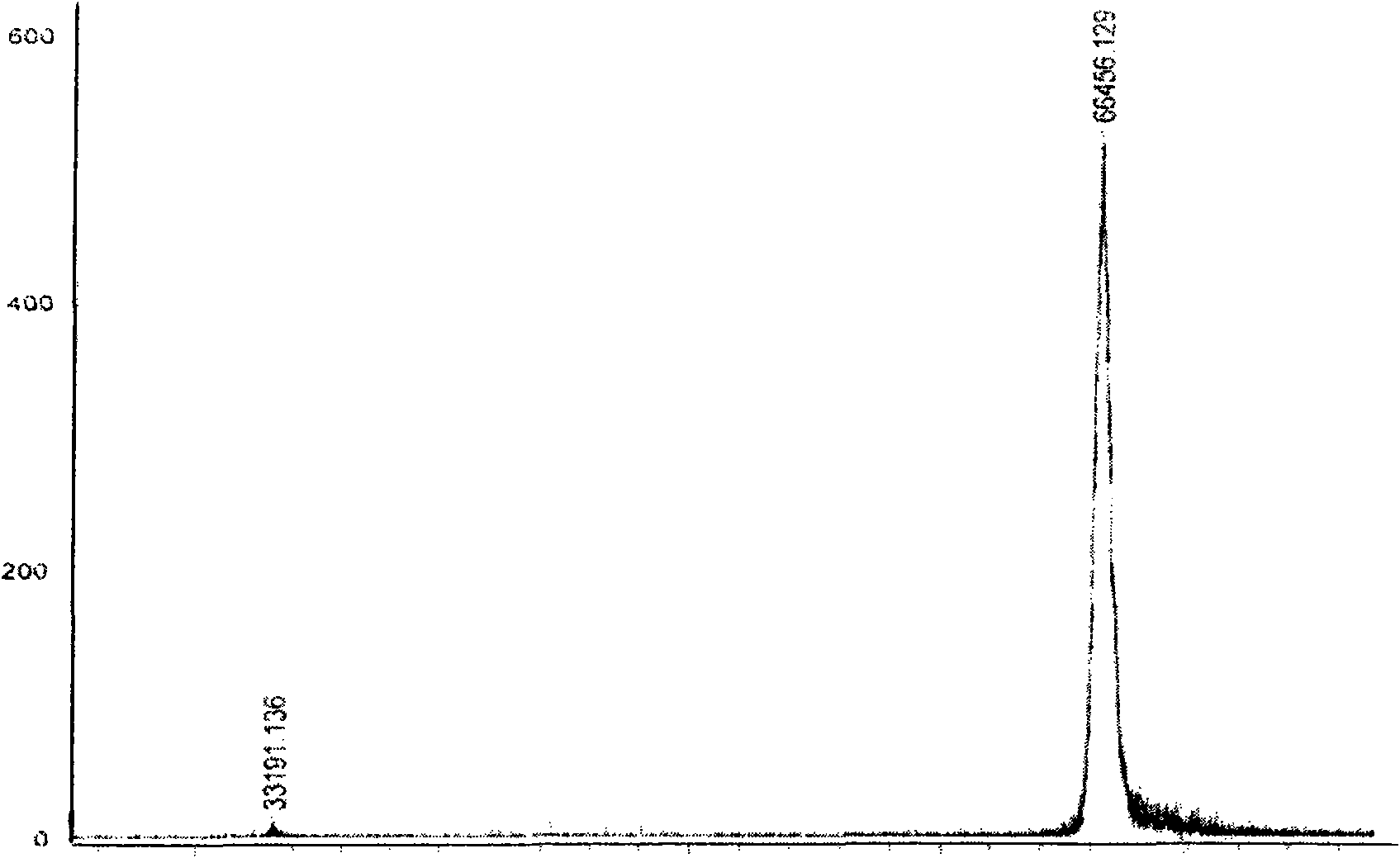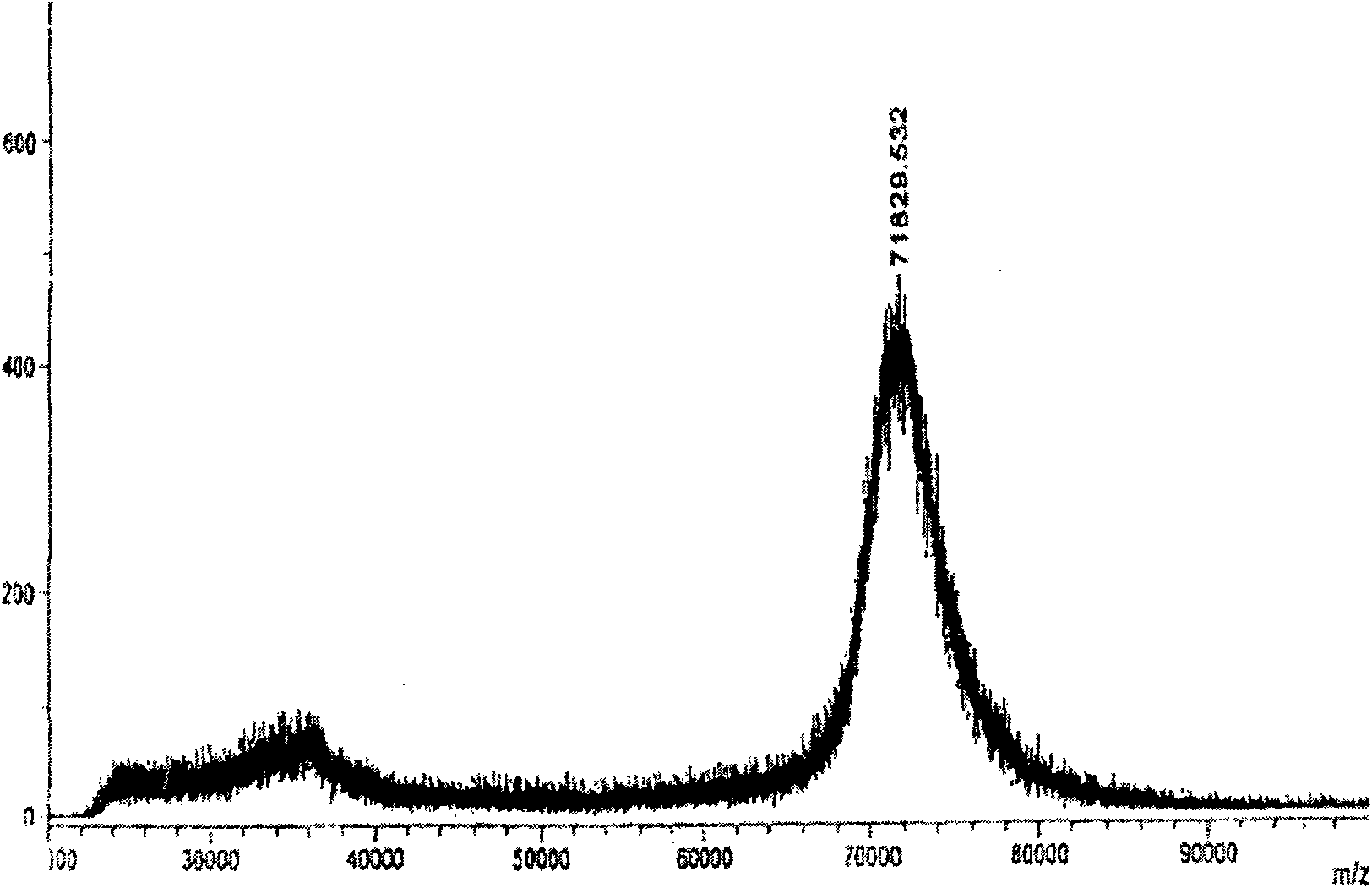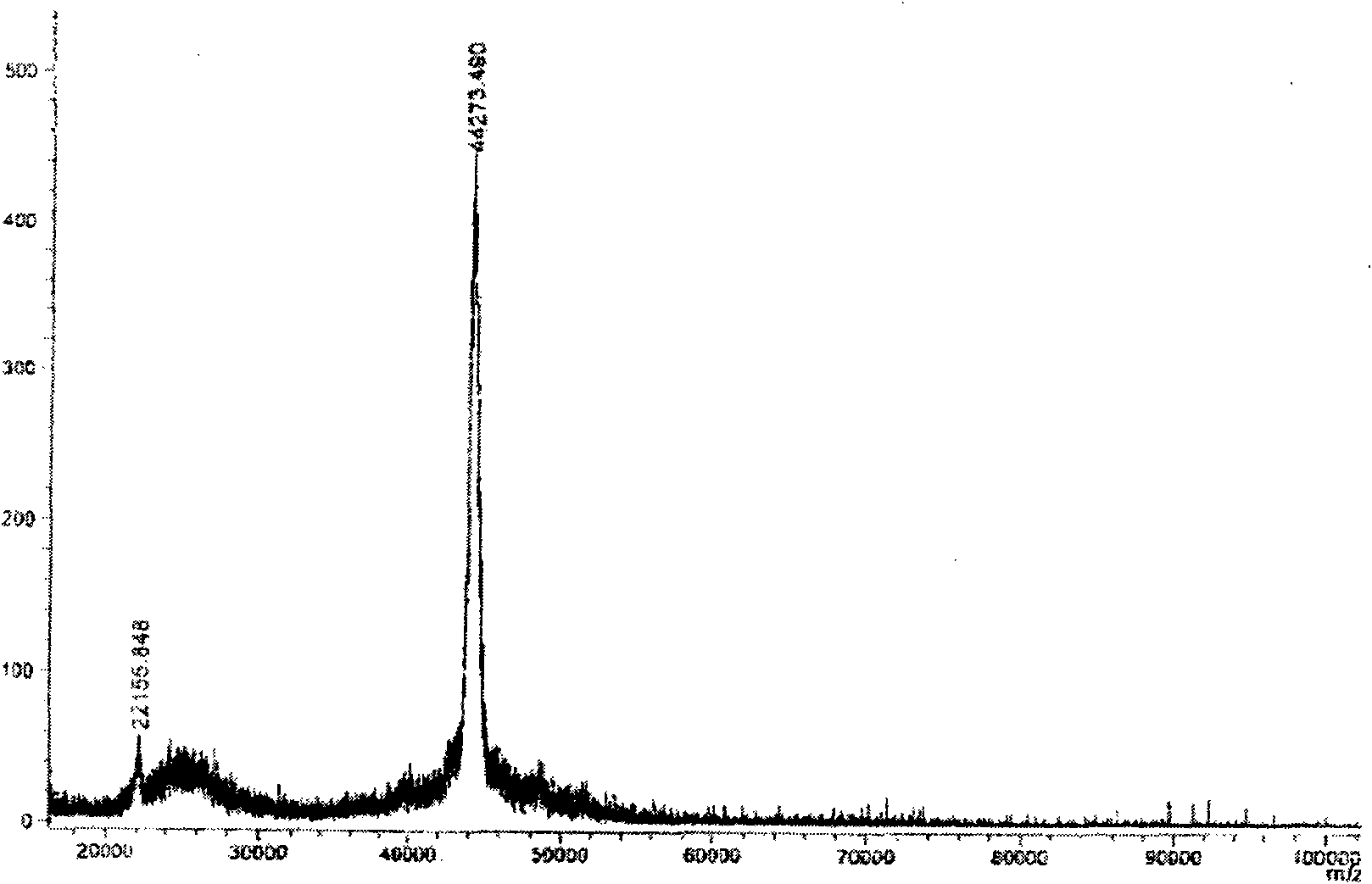Hybridoma cell line and chloramphenicol-resistant monoclonal antibody produced by same
A hybridoma cell line and monoclonal antibody technology, applied in the field of immunochemistry, to achieve high sensitivity and affinity, rapid and sensitive detection, and strong specificity
- Summary
- Abstract
- Description
- Claims
- Application Information
AI Technical Summary
Problems solved by technology
Method used
Image
Examples
Embodiment 1
[0032] Reagent and material preparation
[0033] Chloramphenicol sodium succinate (sigma, C3787); bovine serum albumin (BSA) (Amresco, 0332); human serum albumin (HSA) (Sigma, A9511); ovalbumin (OVA) (Sigma, A5503); Carbodiimide hydrochloride (EDC) (Sigma, E6383); N-hydroxysuccinimide (NHS) (Sigma, 130672); N, N-dimethylformamide (DMF) (Sigma, D4551); Freund's complete adjuvant (Sigma, F5881); Freund's incomplete adjuvant (Sigma, F5506); Tetramethylbenzidine (TMB) (Amresco, 0759); HAT (Sigma, H0262) and HT (Sigma, H0137) ; sodium chloride (Amresco, 0241); potassium chloride (Amresco, 0395); potassium dihydrogen phosphate (Sigma, P9791); disodium hydrogen phosphate (Sigma, 71639); 035-044); Dimethyl sulfoxide (DMSO) (Applichem, 0231); Polyethylene glycol 4000 (PEG4000) (Sigma, P7306); DMEM high glucose medium (Gibco, 11995); Fetal bovine serum (Gibco, C2027050).
[0034] Experimental animals and cells: Balb / c mice (6-8 weeks old, female) were purchased from the Animal Center...
Embodiment 2
[0114] Embodiment 2 drug cross reaction test
[0115] Carry out by the monoclonal antibody screening indirect competition ELISA method established in embodiment one, the monoclonal antibody of chloramphenicol and chloramphenicol hapten structural analog such as chloramphenicol base, chloramphenicol sodium succinate, thiamphenicol chloramphenicol , tetracycline, gentamicin, ampicillin, and florfenicol for competition experiments, dilute these standards into different concentrations for indirect competition ELISA, draw the inhibition standard curve, and calculate the IC of the competitors 50 value and cross-reactivity rate, the cross-reaction rate of this monoclonal antibody and chloramphenicol sodium succinate reaches 120%, and the cross-reaction rate with other similar drug reactions is below 5%, therefore, the anti-chloramphenicol prepared in the present invention The monoclonal antibody can be used to detect chloramphenicol and chloramphenicol sodium succinate residues at th...
Embodiment 3
[0118] Example 3 Application of Monoclonal Antibody 7C10' in the ELISA Method for Detecting Chloramphenicol Residues
[0119] The monoclonal antibody 7C10' can be applied to the ELISA method for detecting chloramphenicol residues, for example, it can be used for the detection of chloramphenicol residues in eel, shrimp, and chicken. Taking eel (purchased in the market, river eel) as an example, the main steps for detecting chloramphenicol residues in eel are as follows:
[0120] 1. Sample pretreatment: Use 20% ethanol and eel samples to homogenize according to the volume to mass ratio of 3:1, then centrifuge the homogenate at 5000G at 4 degrees for 10 minutes, take the middle layer liquid, and dilute it with PBS solution 2 times before proceeding detection. 2. The detection principle of the kit in the present invention is the indirect competition ELISA method, the former OVA-CAP of coating is coated on the microporous plate, adds the chloramphenicol standard substance or sampl...
PUM
 Login to View More
Login to View More Abstract
Description
Claims
Application Information
 Login to View More
Login to View More - R&D
- Intellectual Property
- Life Sciences
- Materials
- Tech Scout
- Unparalleled Data Quality
- Higher Quality Content
- 60% Fewer Hallucinations
Browse by: Latest US Patents, China's latest patents, Technical Efficacy Thesaurus, Application Domain, Technology Topic, Popular Technical Reports.
© 2025 PatSnap. All rights reserved.Legal|Privacy policy|Modern Slavery Act Transparency Statement|Sitemap|About US| Contact US: help@patsnap.com



